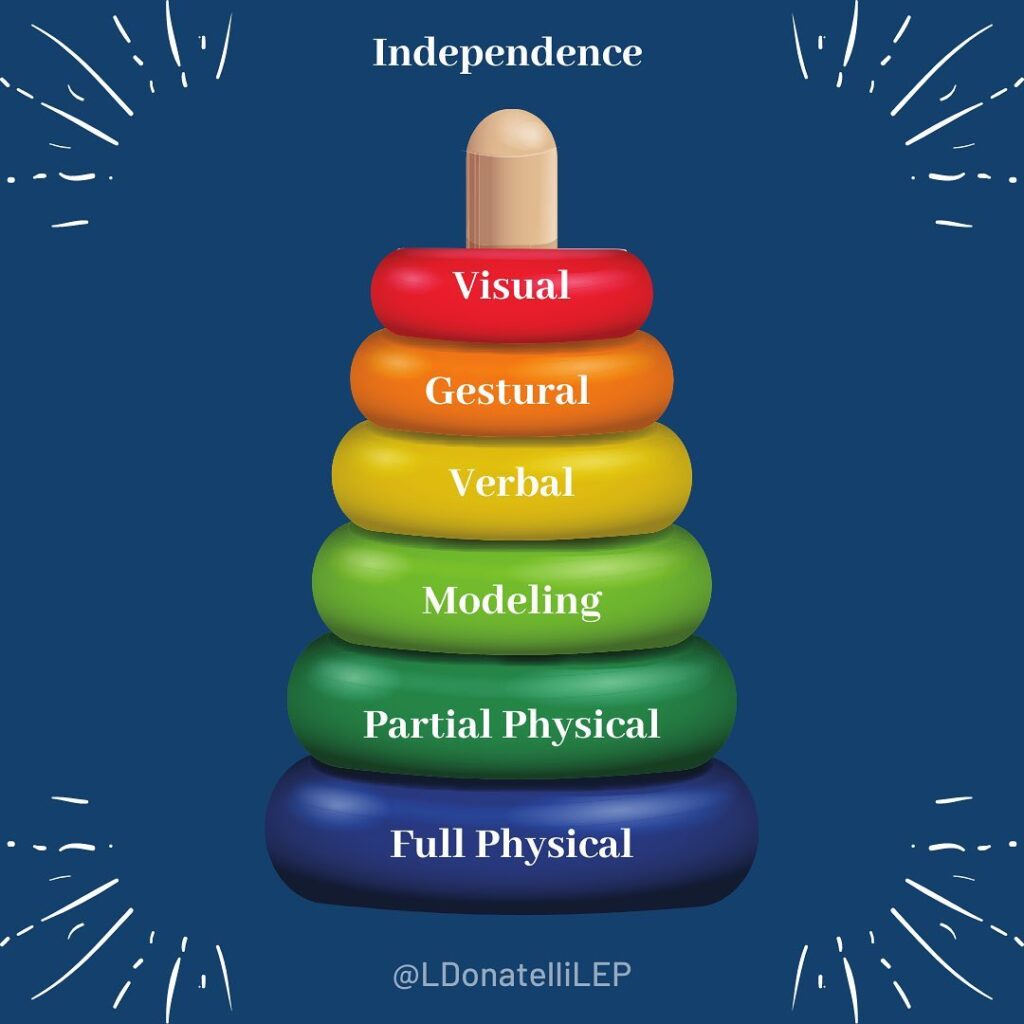
To teach a child to swim, we’re not just going to through them into the water, and let them figure it out, right? No way! First we’re going to hold onto them, then we’ll give then a flotation device while they practice their kicking, then we’ll model and use gestures to show them how to use their arms…Eventually we remove ourselves, and they are swimming on their own! This is an example using different kinds of prompts to teach a new skill, and then fading the prompts to allow for independence. We use prompts to teach our kids/students all kinds of things- eating, dressing, reading, writing…the list goes on. Prompting allows us to teach a new skill, and ensure the child’s success. If you tried to do the same thing over and over and over again, with no success, would you want to keep doing it? Probably not! Allowing a child to feel successful by prompting helps to give them that encouragement, and feeling of success, increasing the chance that they’ll want to continue to master the skill. Not all prompts are created equal though, and it’s easy to “over-prompt” without even knowing it.
So which prompts are better than others? There is a prompt hierarchy, that ranges from least intrusive (the ones you want to work towards), and most intrusive (the ones you may start out using but want to fade ASAP). To know which prompt is required at the start might take some observation, and probing. If you’re unsure, reach out for some consultation. In a fast paced world where so often we just want to “get it done”, taking a beat to remind yourself to step back a bit and be mindful about the level of prompting you are using can be challenging. I suggest keeping a visual handy, as a reminder. An effort towards reducing over-prompting is a step towards a child who is more confident, competent, and independent. After all, “We must help the child to act for himself, will for himself, think for himself; this is the art of those who aspire to serve the spirit.” -Maria Montessori.